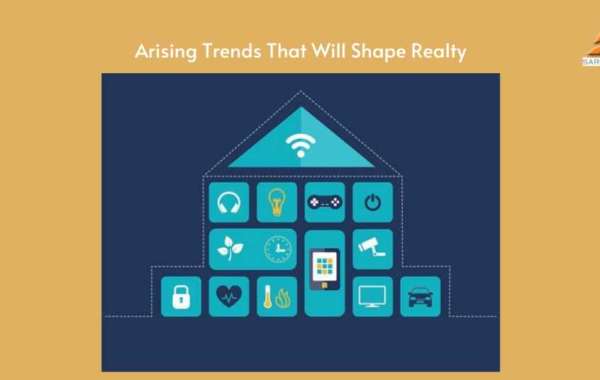
Arising Trends That Will Shape Realty in 2022
With the advent of a novel coronavirus, every sector suffered in one way or another. Lockdowns, economic slowdowns, rising infected cases, and death tolls have changed the way different sectors operate.
Amongst such sectors, one such was the Realty Sector, where the unexpected took place. Although the sectoral demand was hit hard during the initial months of the pandemic, the intention to buy a house was still there.
The reason is the lower property rate and the Government’s support for the sector. Such factors led to a revolution in the real-estate industry leading to some emerging trends shaping the Realty sector.
A Few Arising Trends of Realty are Listed Below:
1. PropTech
With everything being shifted online, technological developments also led to the emergence of proptech: property being surfed, bought, and looked up online.
During the pandemic, proptech was majorly used for e-visiting the property and having a look around.
But in the coming years, proptech is believed to emerge into a more potent force where people will buy, sell, and lease properties online.
2. Demand Momentum:
The crisis has dispersed demand but also increased it for the real-estate sector. Being the highest value asset a person can hold in the form of a house, the fall in prices attracted many buyers.
According to the statistics, the sale growth of the property soared by 51% due to some market factors: prices, demand, supply, inflation, saving rates, interest rates, etc.
3. Government’s Support
With plans such as RERA and Home Plans, the Government has extended a supporting hand towards the real-estate sector. With property prices hitting rock bottom in the initial months of the pandemic. The Government undertook measures to stabilize the supply side and the brokers in the market, the Government took various initiatives.
Also, several people still rely on home loans to buy a house. Rather than focusing on revenues, the Government opted out to reduce the home loan interest rates during the crisis.
Reduced interest rates and falling prices induced demand.
This led to the belief that the real-estate sector can rely more on the Government during times of crisis in the coming years.
4. Increase in Costs
With the outside increase in prices, the inherent cost of the properties and built-in houses have also increased. With the construction activities halted, raw material like cement, cranes, and labor has risen rapidly.
With the situation getting worsened in 2021, costs are not expected to decline anytime sooner.
Therefore, the real-estate sector has to deal with rising costs, falling prices, and severe price crunches in the market.
5. Commercial and Residential Shift
The demand is always different in the commercial and residential sectors in the real estate arena.
The residential sector saw a surge in demand. People and investors found it imperative to own a personal home during the lockdowns.
People who were earlier living in leasing houses showed an intention to own their own homes.
As compared to the residential, the situation was quite grim in the commercial sector. The retail industry had a significant downfall in demand for property, land, and real estate. The pandemic opened new horizons of remote working. It worked from a home culture which led the organizations to believe that they can function in such a manner.
Leading to a fall in the budget allocation by the corporations for building corporate houses and offices.
Also, more and more people were meeting through online platforms, which led to a decline in the need for meeting places, cafes, and meeting halls.
6. Culture of Co-living
Apart from the pandemic, the younger generation has also changed its views and opinion about living standards and beliefs. This has led to the emergence of co-living spaces and areas. Co-living refers to people having similar interests, minds, and ideas living and working together as a whole big family. Such concepts are more prevalent, majorly in western countries. But now, in India as well, Millenials are demanding such places.
Such demands are met by bigger bungalows and flats which could accommodate such a large number of people at a time. These properties also have higher leasing values and rents.
7. Sustainable Living
Nowadays, everyone has become more health-conscious and wants to take care of the environment and sanitization to prevent health detrotiation and diseases.
With people becoming more aware and careful of the environment, they are now ready to pay more if the house is based on sustainable development and proper hygiene.
The expectation is more for eco-friendly living promoting joint development of the environment and their health.
8. Demand for Gated Communities
The trend for a peaceful and secluded society has emerged in recent times, which has led to the rise of gated communities.
Gated communities are those communities that have extreme safety and privacy guidelines. No one can enter such societies without permission as they are under the 24/7 scrutiny of safety guards.
Conclusion
The pandemic has changed how the world used to operate earlier. Technology plays a crucial role in the advancement and survival of every sector. Soon without it, growth will also be impossible. Although the real estate sector in India is unregistered, unlisted, and unauthorized, technological advancement has managed to handle it well. People’s outlook has changed toward the realty sector; therefore, these trends will become more prominent by the end of the year.
Check More Info: Gated community flats in Bangalore